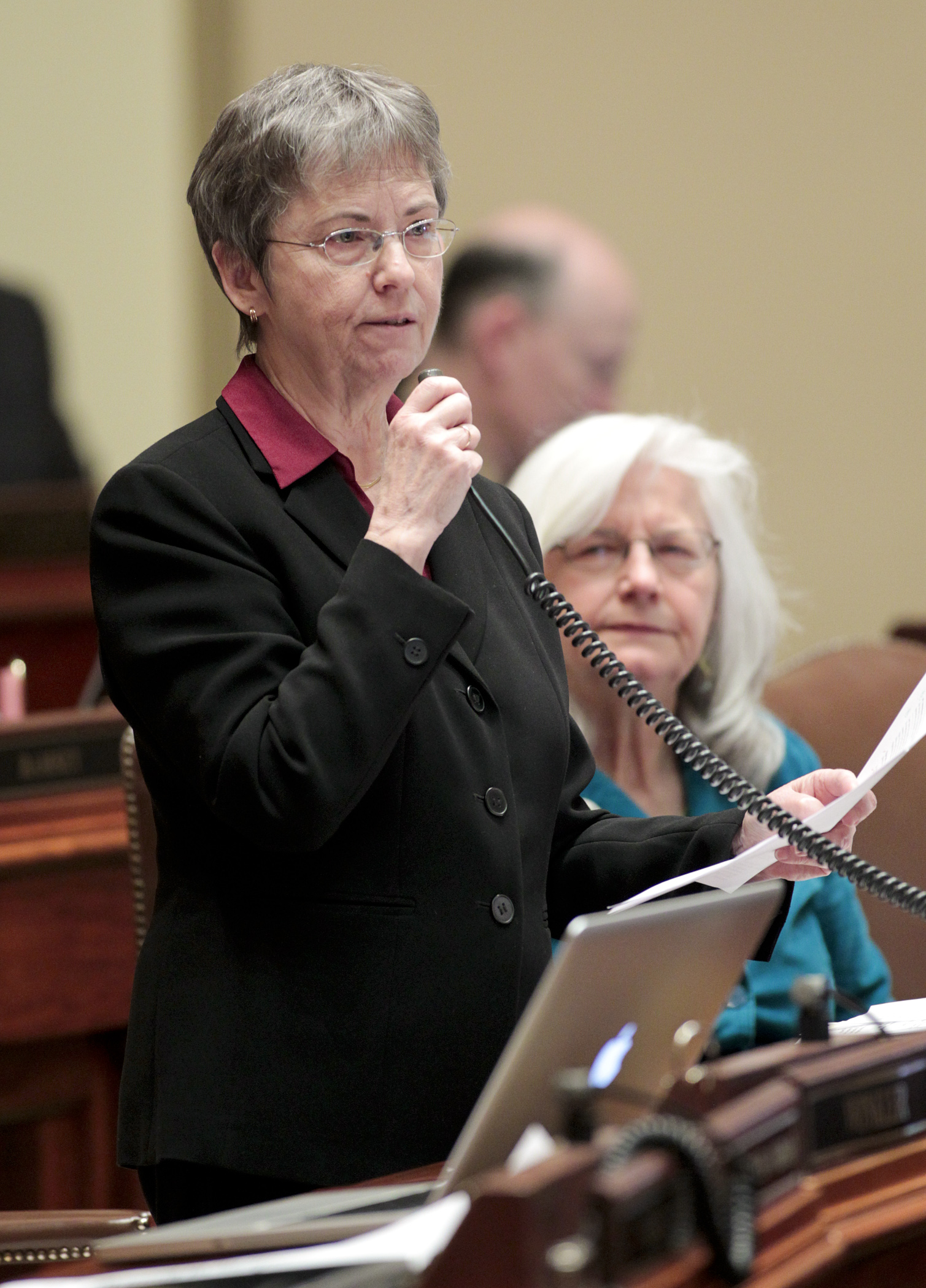Electronic rosters could gain wider use in upcoming elections

Some cities and school districts could use an electronic roster system to verify pre-registered voters and to process same-day registrations during the 2014 elections.
Electronic rosters had a trial run in select cities during the 2013 elections and a bill passed Friday by the House 125-0 would both extend last year’s study to 2014 and authorize wider use of the system. Sponsored by Rep. Carolyn Laine (DFL-Columbia Heights), HF2166 next moves to the Senate where Sen. Terri Bonoff (DFL-Minnetonka) is the sponsor.
“This bill sets the statutory requirements for going ahead with the use of electronic rosters in Minnesota and gives any local jurisdiction the permission to go ahead on their own,” Laine said.
[Watch the full video archive of Friday's House floor session here]
Laine lamented that the study of electronic rosters during the general election of 2014 would consist of a report on the experience of participating cities rather than an evaluation on the potential cost savings of using an electronic roster system. Funding could not be included in the bill, she said.
“I wish we could do an official evaluation in a major statewide election that had this tested across the line with the downloading of data from the secretary of state and the uploading after. …This could be much quicker, much easier, much less time, and have good cost savings to the county,” said Laine.
While Rep. Tim Sanders (R-Blaine) applauded the bill, he said he would prefer removing the study portion unless it could be conducted more comprehensively.
“If the study does prevail,” Sanders said, “Let’s make sure that we study everything that we need to study in its entirety so that we can move forward with electronic poll books.”
A long list of requirements for the technology that would house an electronic roster include:
- automatically populating voter information through a scanned driver’s license or identification card;
- printing out a voter certification that a voter can sign;
- alerting election judges if a voter is not eligible to vote, lives in another precinct or has already voted;
- meeting Internet security requirements; and
- exporting data in the format requested by the secretary of state.
Cities that would participate in the study consist of: Baxter, Brainerd, Dilworth, Eagan, Lakeville, Mankato, Minneapolis, Minnetonka, Moorhead, St. Anthony, St. Paul and Sylvan Township. A city would not have to include each precinct in the study.
Cities not participating in the study could choose to use an electronic roster system by notifying the secretary of state by Aug. 1, 2014. They would need to show the state they have met specific technology requirements by Oct. 1, 2014.
Cities, school districts and counties could use electronic rosters in elections on or after Jan. 1, 2015. They would need to notify the secretary of state of their intent to use electronic rosters 90 days before the election date. The same technology requirements would apply and not every precinct would need to participate.
“I think that anytime that we can move forward with technology,” Sanders said, “where we can improve integrity and we can improve access and we can improve the timing and the quickness that we can get through our election process, I think it’s a good thing. I think electronic poll books, electronic rosters help us accomplish those goals.”
Related Articles
Search Session Daily
Advanced Search OptionsPriority Dailies
Ways and Means Committee OKs proposed $512 million supplemental budget on party-line vote
By Mike Cook Meeting more needs or fiscal irresponsibility is one way to sum up the differences among the two parties on a supplemental spending package a year after a $72 billion state budg...
Meeting more needs or fiscal irresponsibility is one way to sum up the differences among the two parties on a supplemental spending package a year after a $72 billion state budg...
Minnesota’s projected budget surplus balloons to $3.7 billion, but fiscal pressure still looms
By Rob Hubbard Just as Minnesota has experienced a warmer winter than usual, so has the state’s budget outlook warmed over the past few months.
On Thursday, Minnesota Management and Budget...
Just as Minnesota has experienced a warmer winter than usual, so has the state’s budget outlook warmed over the past few months.
On Thursday, Minnesota Management and Budget...